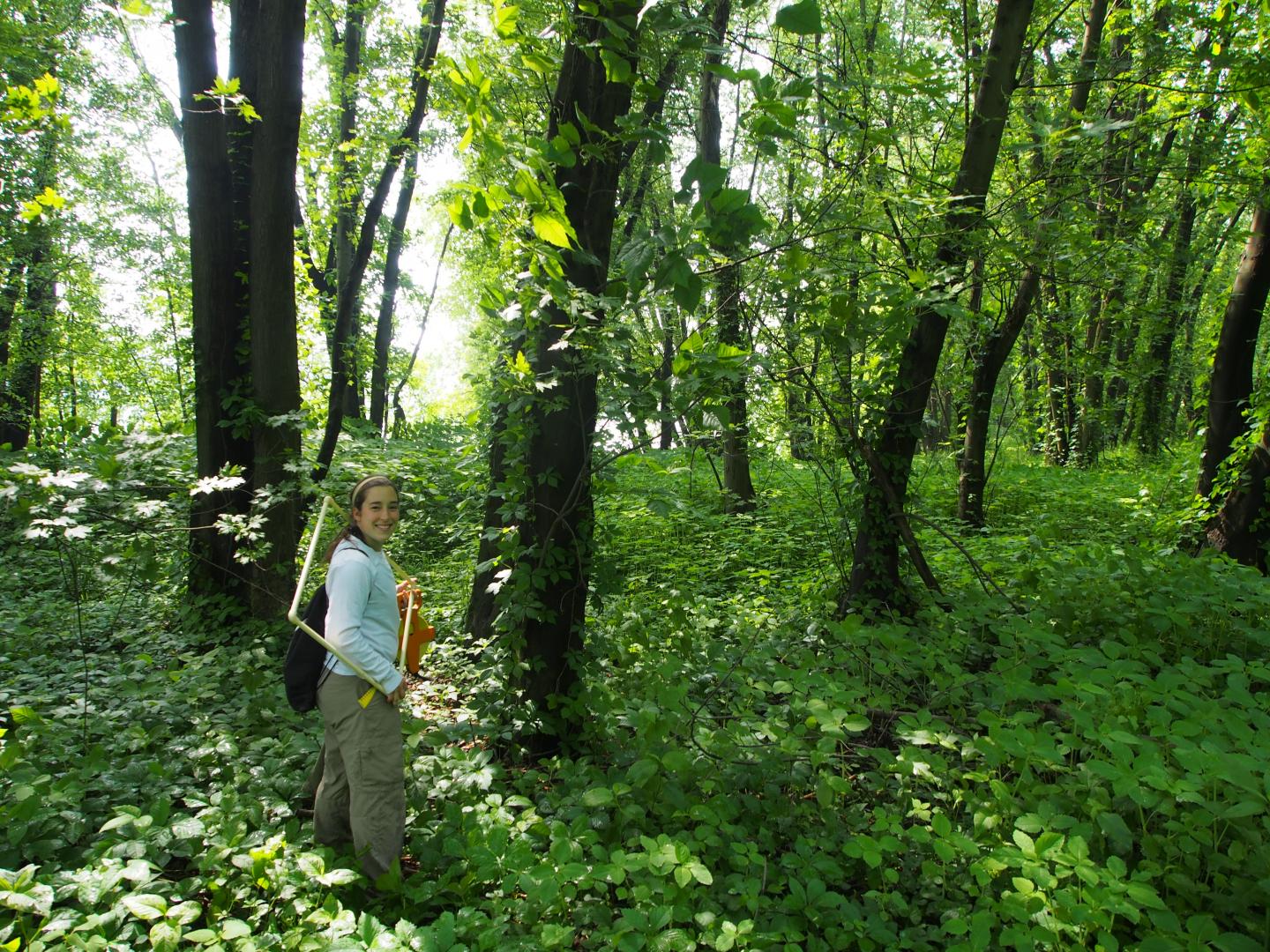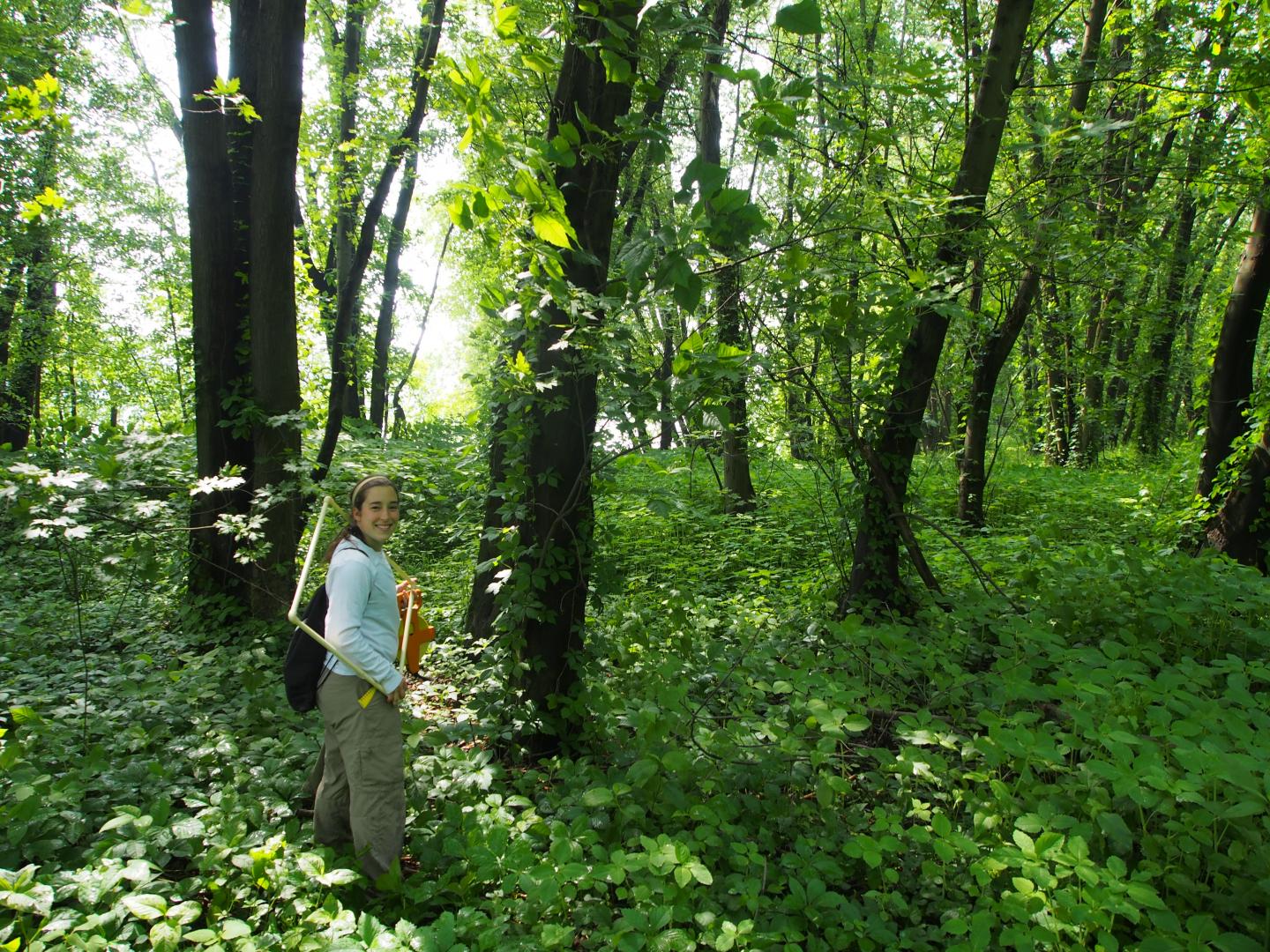
Credit: Chris Martine
Dozens of studies have looked at the effects of Japanese knotweed on natural communities in Europe and North America. Yet Bucknell University professor Chris Martine still felt there was something important to learn about what the plant was doing along the river in his own backyard.
"The more time I spent in the forests along the Susquehanna River, the more it seemed like something was really going wrong there," said Martine. "In addition to the prevalence of this single invasive species, it looked like the very existence of these forests was under threat."
What Martine noticed was similar to what local nature lovers and biologists with the Pennsylvania Natural Heritage Program were also starting to see: these forests, specifically those classified as Silver Maple Floodplain Forests, were not regenerating themselves where knotweed had taken a foothold.
In a new study published in the open access Biodiversity Data Journal, Martine and two recent Bucknell alumni conclude that Japanese knotweed has not only excluded nearly all of the native understory plant species in these forests, but it has prevented the trees already established in the canopy from leaving behind more of themselves.
"If you were to fly over these forests, or even look at a Google Earth image, you'd see a nice green canopy along the river consisting of mature silver maples, river birches, and sycamores," explained Martine. "But below that canopy there is almost nothing for tens of feet before you reach an eight-to-twelve-foot-tall thicket of knotweed. Few new trees have been able to grow through that in the last 50-60 years and our surveys found that seedlings of these species are quite rare."
The authors suggest that as mature trees die of natural causes over the next several decades and are not replaced, these systems will shift from tree-dominated riverbank habitats to "knotweed-dominated herbaceous shrublands" incapable of supporting a rich diversity of insects, birds, and other wildlife. Loss of trees in these habitats could likely also lead to riverbank erosion and increase the severity of flood events.
The few places where knotweed has not taken over offer a bit of hope, however, from an unlikely hero: poison-ivy, which Martine calls "perhaps the least popular plant in America."
"What we see in the data is that poison-ivy often trades understory dominance with knotweed. That is, when knotweed isn't the big boss, poison-ivy usually is. The difference is that whereas knotweed knocks everyone else out of the system, poison-ivy is more of a team player. Many other native plants can co-occur with it and it even seems to create microhabitats that help tree seedlings get established."
The prevalence of poison-ivy in these sites didn't go unnoticed by undergraduate Anna Freundlich, who collected most of the plant community data — more than 1,000 data points — in a single summer as a research fellow.
"Anna developed a pretty serious methodology for avoiding a poison-ivy rash that included long sleeves, long pants, gloves, duct tape, and an intense wash-down protocol," said her research advisor, "and even after crawling through the plant for weeks she managed to never once get a rash."
Martine cautions against too much optimism regarding the chances of one itch-inducing native plant saving the day, however.
"Righting this ship is going to require eradicating knotweed from some of these sites, and that won't be easy work. It will take some hard manual labor. But it's worth doing if we want to avoid the imminent ecological catastrophe. These forests really can't afford another half-century of us letting knotweed run wild."
###
Freundlich is a now pursuing a Master's degree in plant ecology at the University of Northern Colorado. Lead author Matt Wilson, a Bucknell Master's student at the time of the study who analyzed the dataset, now works for the Friends of the Verde River in Cottonwood, AZ.
Original source:
Wilson M, Freundlich A, Martine C (2017) Understory dominance and the new climax: Impacts of Japanese knotweed (Fallopia japonica) invasion on native plant diversity and recruitment in a riparian woodland. Biodiversity Data Journal 5: e20577. https://doi.org/10.3897/BDJ.5.e20577
Media Contact
Chris Martine
[email protected]
@Pensoft
http://www.pensoft.net
Related Journal Article
http://dx.doi.org/10.3897/BDJ.5.e20577





